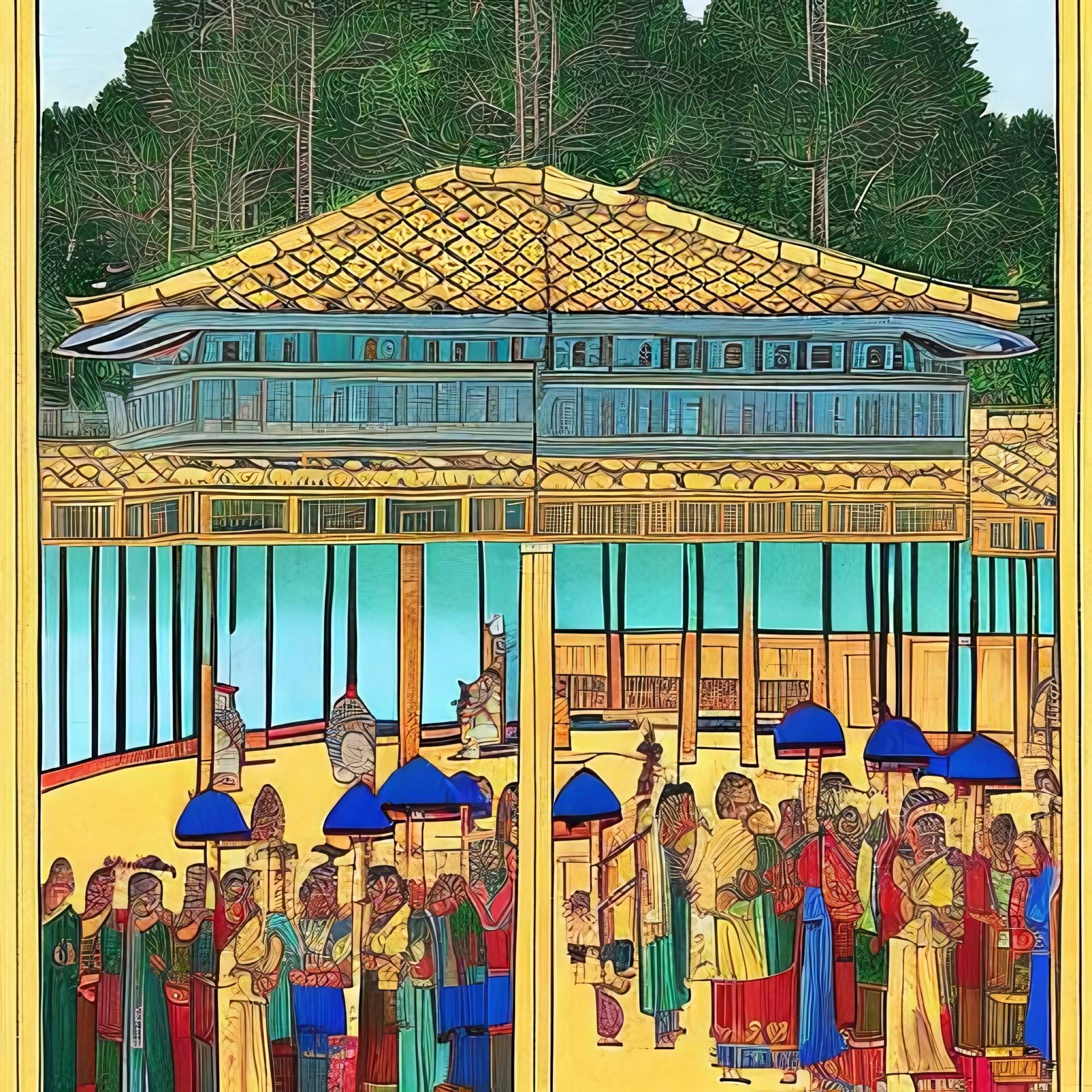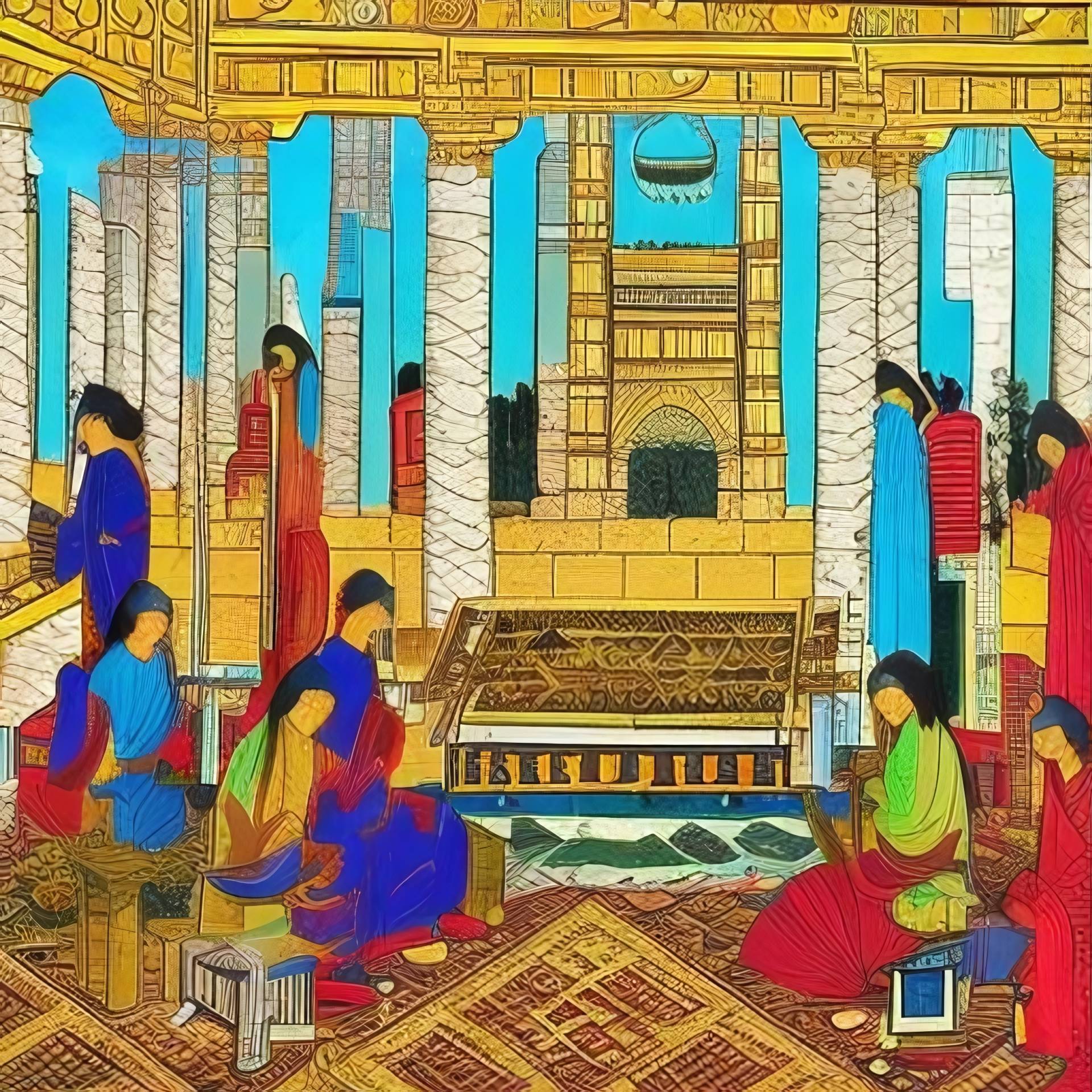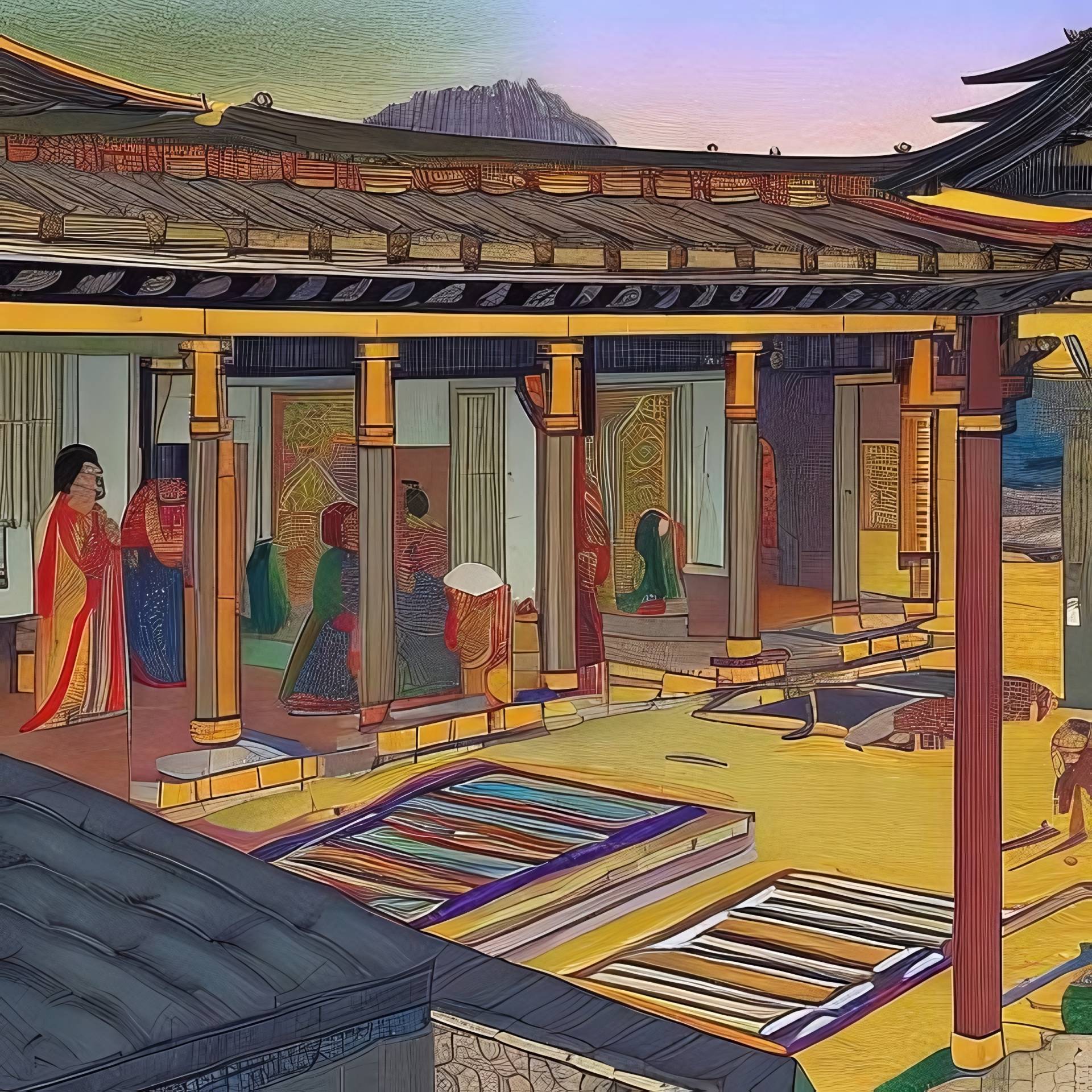An Empirical Analysis of Their Past and Present Influence
The Kushana Empire is a fascinating case study for historians interested in understanding the development, expansion, and decline of ancient civilizations. Through analysis of primary sources and careful examination of extant evidence, scholars have uncovered valuable insights into this enigmatic empire, its people, and culture. This article will examine key aspects of Kushan society and analyse their enduring legacy, highlighting both continuities and changes that characterize this influential civilization through the ages.
Kushan Origins: A Blend of Cultures and Ideologies
Formerly known as Yuezhi, the Kushanas originated from an Indo-European tribe hailing from the Tarim Basin region, located in the western part of present-day China. They migrated to northern India around the second century BCE and established their rule, adopting elements of Greek culture from neighbouring Seleucid Empire while also assimilating traditional Persian ideologies.
Incorporating various cultural influences and philosophies, the Kushan elite encouraged syncretism in their territories and allowed freedom of religious expression, further contributing to the cosmopolitan nature of their society. By embracing differing worldviews and fostering cross-cultural exchange, the Kushans facilitated the rise of great thinkers and artists, creating a vibrant intellectual climate that influenced the wider world.
Economic Growth and Commercial Expansion: Connectivity and Globalization
Understanding the economic foundations of the Kushan Empire is crucial to appreciating its accomplishments. Despite challenges posed by geographic barriers and political instability, the Kushanas nurtured long-distance commerce through the establishment of efficient communication networks, road construction, and maintenance programs. These initiatives facilitated transregional trade and resulted in robust growth and prosperity.
One illustration of thriving commercial enterprises is coinage production. As early as the first century CE, the Kushans began minting copper, silver, and golden coins featuring depictions of rulers, divinities, and animals, showcasing their creative flair. The Kushanas were also skilled metallurgists, crafting exquisite objects and weapons for use in warfare or ceremonial purposes.
Diplomacy and Military Might: Extending Dominance Across Eurasia
While fostering internal stability and promoting cultural diversity, the Kushanas engaged in aggressive territorial expansion throughout their reign. Skilled strategists and commanders devised effective tactics for battlefield engagements against numerically superior adversaries, employing combined arms formations and adaptable battle plans. By leveraging these advantages and maintaining tight grips on conquered territories, the Kushans extended their domains significantly.
Recognizing the importance of sustaining cordial relationships with neighbouring powers, Kushan monarchs pursued ambitious diplomatic missions aimed at securing alliances and cementing partnerships. For instance, Emperor Chandragupta Maurya of Gupta dynasty acknowledged his recognition of the legitimacy of Kujula Kadphises’ authority, demonstrating mutual respect and cooperation among regional entities.
Decline and Legacy: Lessons Learned From the Rise and Fall of the Kushans
Eventually, even the grandest imperial structures eventually crumble. Internal strife, weakening centralized control, devastating incursions from nomadic hordes, and economic stagnation led to the gradual breakdown of the Kushan Empire during the third and fourth centuries CE. Despite their decline and ultimate demise, the Kushanas bequeathed several legacies worthy of preservation and exploration.
Cultural Integration and Linguistic Innovation: Uniting Peoples Under One Umbrella
By embracing foreign ideas, languages, and belief systems, the Kushanas introduced remarkable syncretism within their realms. Encouraging harmonious interactions between diverse communities, the Kushanas facilitated the spread of knowledge and innovations across a wide swath of Asia and beyond. With their impact still felt today, particularly in the areas of art, architecture, religion, language, and philosophy, it is undeniable that the former empire played a vital role in shaping modern global societies.
Lessons for Modern Leaders and Scholarship: Reflecting on the Enduring Significance of Kushana Culture
Analyzing the rise and fall of the Kushana Empire reveals intriguing parallels with contemporary challenges faced by states and organizations around the globe. Drawing inspiration from their resilience amidst adversity, we might find solutions to issues such as socio-economic inequality, environmental pressures, international conflict resolution, and identity politics. Furthermore, studying the evolution of Kushana ideology, governance structures, social hierarchies, and material culture could serve as a blueprint for improving our own decision-making processes and historical research methodologies.
Navigating Uncharted Waters: Exploring Future Research Avenues and Opportunities
Advancing our understanding of the Kushanas requires multifaceted approaches bridging disciplines like archaeology, philology, numismatics, anthropology, epigraphy, and more. To capitalize on emergent opportunities, future scholarship should emphasize:
- Synthesizing available data: Streamlining and analyzing existing information on Kushana linguistics, material culture, art history, archaeological sites, architectural remains, and religious practices can help build coherent narratives about their past.
- Collaboration and interdisciplinarity: Engaging experts from different fields can lead to novel interpretations of critical junctures and overlooked dynamics in Kushana history. Such collaborations are essential for comprehensive investigations.
- Advanced Technologies in Data Analysis, Visualization, and Presentation: Utilizing cutting-edge digital tools and techniques (such as geographic information systems [GIS], 3D modeling, network analysis, agent-based simulations) allows scholars to manipulate, compare, and understand complex datasets. These advancements help visualize patterns, trends, and connections otherwise obscured through traditional methods, enhancing public engagement and accessibility to academic discoveries.
- Geoarchaeology and Paleoclimatology Perspectives: Investigating Earth’s dynamic physical environments helps contextualize human activities and responses to natural disasters or climatic changes. Combining these specialties alongside classic archaeology offers new insights into how the Kushanas adapted to various ecological scenarios and coped with the consequences of their actions on local landscapes.
- Oral Traditions and Folklore: Documenting and examining indigenous stories, songs, folktales, customs, and legends associated with the region can yield alternative perspectives on the Kushanas. Ethnographies, comparative mythology, ethnoastronomy, and performance studies aid in reconstructing intangible heritage preserved by contemporary communities descended from ancient populations.
- Reassessment of Previous Assumptions and Biases: Recognizing historiographical pitfalls that stemmed from preconceived notions about Central Asian peoples, Indo-European origins, Classical influences, Buddhist orthodoxy, Hellenistic exclusivity, etc., opens up fresh pathways for research. Embracing a holistic approach free from these constraints enables more nuanced readings of evidence and avoids perpetuating outdated stereotypes.
Critique of Sources and Interpretations: Ascertaining the authenticity, reliability, and biases inherent in written accounts or artifacts used to construct Kushana chronicles prompts necessary revisions and refinements to established narratives. Honesty about uncertainties and ambiguities encountered during this process fosters an environment where scientific rigor prevails while remaining open to unexpected breakthroughs and paradigm shifts. This candor further stimulates productive discussions among scholars who might have differing opinions without compromising the search for truth.
References
– Aurel Stein. 1907. Ancient Khotan: Detailed report of a visit to Gihilju and Tunhuang in 1900–1901. Oxford University Press.
– Hill, John E. 2004. Through the Jade Gate to Rome: A Study of the Silk Routes during the Han Dynasty. Washington, DC: BookSurge, LLC. ISBN 978-1-59457-134-1.
Tags
Divi Meetup 2019, San Francisco
Related Articles
Unappreciated Greatness
Life and Legacy of Jahangir of the Mughal Empire. Jahangir ruled over one of the largest empires in human history during his lifetime, yet few people outside of South Asia have heard of him. I aim to shed light on the life and legacy of this remarkable figure,...
The Plague Doctor’s Diary
A Personal Account of the Turin Epidemic of 1656. I am writing this diary to record my experiences and observations as a plague doctor in Turin, the capital of the Duchy of Savoy, during the terrible epidemic that has afflicted this city and its surroundings since the...
The Timeless Beauty of Bustan
Unveiling the Secrets of Saadi Shirazi's Masterpiece.In the realm of Persian literature, few works have captured the essence of love, spirituality, and morality quite like Bustan (The Orchard) by Saadi Shirazi. This 13th-century masterpiece has left a lasting impact...
Stay Up to Date With The Latest News & Updates
Explore
Browse your topics of interest using our keyword list.
Join Our Newsletter
Sign-up to get an overview of our recent articles handpicked by our editors.
Follow Us
Follow our social media accounts to get instant notifications about our newly published articles.










